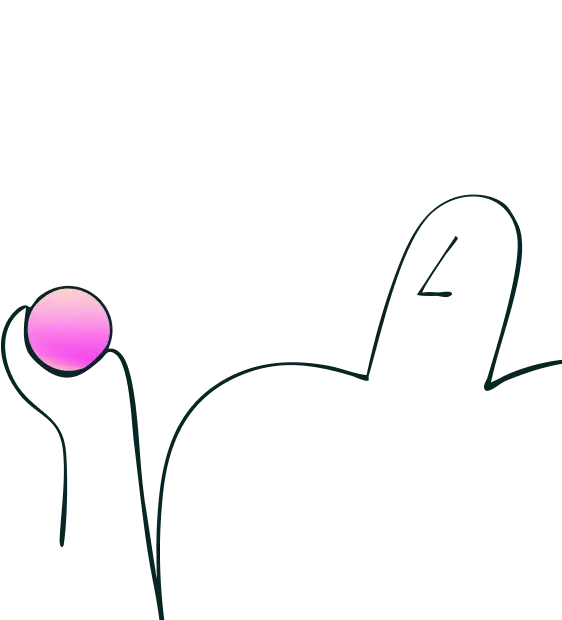30 Jan 2025
|5 min
Stakeholder interviews
Unlock the power of stakeholder interviews in UX research. Learn what they are, why they matter, and when to conduct them for project success.

In the realm of user experience (UX) research, stakeholder interviews play a pivotal role in shaping successful projects. These interviews are a crucial step in any research plan, offering insights and information that can make or break a project.
In this article, we will explore what UX research stakeholder interviews are, why they’re important, and when they should be conducted. We’ll also guide you on how to develop your own question set for stakeholder interviews.
What are UX research stakeholder interviews?
Before we dive into the "why" and "when," let's understand the essence of stakeholder interviews in UX research. These interviews involve engaging with key project stakeholders to gather information and insights that you can use to shape your research plan.
They serve as a means to align the team, clarify project goals and priorities, identify how and when the learnings will be applied, and to ensure that everyone involved is on the same page.
Stakeholder interviews lay the groundwork for effective research that directly supports the broader goals of the organization.
Why are stakeholder interviews important?
Stakeholder interviews are vital for several reasons.
Alignment with organizational goals
Stakeholder interviews help you understand how the research ties into the broader goals of the organization. This alignment ensures that the research isn’t conducted in isolation but contributes to an overarching, prioritized mission.
Leverage existing knowledge
Stakeholder interviews uncover what’s already known about the research topic and the target audience. This knowledge is invaluable, as it builds on existing learning, prevents reinventing the wheel, and mitigates rework.
Identify potential challenges
Stakeholders can identify potential challenges or concerns that may arise during the project. These pitfalls can be addressed proactively, saving time and resources in the long run.
Define success
By clarifying what success looks like, stakeholder interviews set the stage for measuring the impact of your research. This understanding guides the project team towards achieving specific outcomes.
Resource allocation
Understanding the resources stakeholders can provide, whether in design, content, recruiting support, or other areas, is essential for planning a realistic research project.
When should you conduct stakeholder interviews?
You should start stakeholder interviews in the early stages of research planning.
This sets the tone and direction for the research plan and ensures that all team members are aligned with the project's goals, objectives, timeline, and intended outcomes.
Using a stakeholder interview checklist can help ensure that key topics are consistently covered during these discussions.
Stakeholder discussions should then be ongoing, with regular check-ins to maintain alignment and address any emerging concerns or changes in the project's context (e.g. changes to the roadmap, competitive landscape, etc.).
Creating a stakeholder interview question set
The stakeholder interview question tool from Curiosity Tank can help you develop your own set of stakeholder questions tailored to your specific research and organizational culture. By using this tool, you can ensure that your stakeholder interviews are aligned with your project's objectives and the needs of your team.
Mastering stakeholder interviews for successful UX research
Stakeholder interviews are the cornerstone of successful UX research projects. Conducted at the right time and continuing discussions throughout the research process, they ensure alignment with organizational goals, leverage existing knowledge, identify potential challenges, define success, allocate resources effectively, and help hone which themes to explore further in analysis.
By addressing these critical questions tailored to your project, you can embark on research initiatives with a clear understanding of the project's context and objectives.
Remember, stakeholder interviews aren’t a one-time event but a continuous process to maintain alignment and adapt to changing project dynamics. With effective stakeholder engagement, your UX research projects can achieve their goals and contribute significantly to your organization's success.
Elevate your research practice
Join over 320,000+ marketers, designers, researchers, and product leaders who use Lyssna to make data-driven decisions.
--
This article was authored by Michele Ronsen, Founder and CEO of Curiosity Tank. Michele is a user research executive, coach and educator. She teaches design and user research to people around the world. Her corporate trainings and workshops are inspired by working with Fortune 500s and start-ups for more than twenty years. Fuel Your Curiosity is her award-winning, free, user-research newsletter. In 2020, LinkedIn honored Michele with a TopVoices award in the Technology category. She is the first and only researcher to receive this award.
You may also like these articles


Try for free today
Join over 320,000+ marketers, designers, researchers, and product leaders who use Lyssna to make data-driven decisions.
No credit card required





